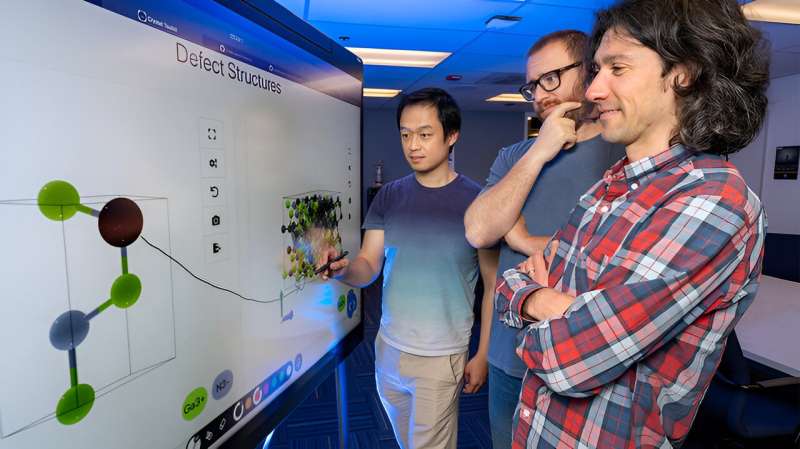This article has been reviewed according to Science X's editorial process and policies. Editors have highlighted the following attributes while ensuring the content's credibility:
fact-checked
peer-reviewed publication
trusted source
proofread
Researchers develop framework for databasing properties of crystal defects

Point defects (e.g. missing, extra or swapped atoms) in crystalline materials often determine the actual electronic and optical response of a given material. For example, controlled substitutions in semiconductors like silicon are the backbone of modern technology. Despite their importance, point defects are notoriously difficult to simulate and characterize, particularly across wide regions of the periodic table.
Researchers at Lawrence Livermore National Laboratory (LLNL) have now created software as part of its open-source software distribution that can efficiently and effectively automate and analyze these types of calculations.
The authors demonstrated the fully automated approach on several technologically important materials. including gallium nitride (the basis of all modern solid-state lighting), gallium oxide (an emerging ultrawideband gap semiconductor) and strontium titanate (a widely studied common mineral), with the work recently published in the Journal of Applied Physics and selected as an Editor's Pick as part of a special issue on "Defects in Semiconductors."
"This work has enabled us to look more systematically at different types of defects in materials that exhibit the behavior we have been looking for," said Lars Voss, a co-author of the work.
"We have been doing these types of calculations by hand for years, but modern advances in high-throughput computing and database software have made this a more practical and flexible approach," said LLNL scientist Joel Varley, also a contributing author on the paper.
The study and open-source software developed as part of the project has attracted interest from a number of international research teams and industry, the researchers said.
"Now that we have developed a framework to streamline this approach with modern databasing practices, this opens up a straightforward path to curate data for machine-learning approaches to be systematically applied to point-defect properties by the community," said Jimmy Shen, lead author on the paper.
More information: Jimmy-Xuan Shen et al, Simulating charged defects at database scale, Journal of Applied Physics (2024). DOI: 10.1063/5.0203124
Journal information: Journal of Applied Physics
Provided by Lawrence Livermore National Laboratory




















